Modeling and Analysis of Maximum Power Tracking of a 600 kW Hydraulic Energy Storage Wind Turbine Test Rig
Abstract
1. Introduction
2. System Overview
3. Mathematical Model
3.1. Wind Turbine
3.2. Hydraulic Variable Transmission
3.2.1. Main Hydraulic Pump
3.2.2. Main Hydraulic Motor
3.3. Hydraulic Energy Storage
3.3.1. Energy Storage Hydraulic Pump
3.3.2. Hydraulic Accumulator
3.4. Electric Power Generation
Synchronous Generator
4. System Control Scheme
4.1. Tip Speed Ratio (TSR) MPPT Algorithm
4.2. MPPT and Constant Frequency Control
5. Simulation and Discussion
5.1. The Design of the Experimental Prototype
5.2. Simulations and Analyses
5.2.1. Step Wind Speed Condition
5.2.2. Turbulent Wind Speed Condition
6. Conclusions
Author Contributions
Funding
Conflicts of Interest
References
- Global Wind Energy Council. Global Wind Report; Technical Report; GWEC: Brussels, Belgium, 2018. [Google Scholar]
- Cai, M.; Wang, Y.; Jiao, Z.; Shi, Y. Review of fluid and control technology of hydraulic wind turbines. Front. Mech. Eng. 2017, 12, 312–320. [Google Scholar] [CrossRef]
- Jones, J.A.; Bruce, A.; Lam, A.S. Advanced Performance Hydraulic Wind Energy. In Proceedings of the 5th IEEE Green Technologies Conference, Denver, Colorado, 4–5 April 2013. [Google Scholar]
- Mahato, A.C.; Ghoshal, S.K. Various power transmission strategies in wind turbine: An overview. Int. J. Dyn. Control. 2019, 7, 1–8. [Google Scholar] [CrossRef]
- Schmitz, J.; Vukovic, M.; Murrenhoff, H. ASME/BATH 2013 Symposium on Fluid Power and Motion Control. In Hydrostatic Transmission for Wind Turbines: An Old Concept, New Dynamics; American Society of Mechanical Engineers: New York, NY, USA, 2013; p. V001T01A029. [Google Scholar]
- Schmitz, J.; Diepeveen, N.F.B.; Vatheuer, N.; Murrenhoff, H. Dynamic transmission response of a hydrostatic transmission measured on a test bench. In Proceedings of the European Wind Energy Conference and Exhibition (EWEA 2012), Copenhagen, Denmark, 16–19 April 2012. [Google Scholar]
- Izadian, A.; Hamzehlouia, S.; Deldar, M.; Anwar, S. A hydraulic wind power transfer system: Operation and modeling. IEEE Trans. Sustain. Energy 2014, 5, 457–465. [Google Scholar] [CrossRef]
- Pusha, A.; Izadian, A.; Hamzehlouia, S.; Girrens, N.; Anwar, S. Modeling of gearless wind power transfer. In Proceedings of the IECON 2011—37th Annual Conference of the IEEE Industrial Electronics Society, Melbourne, VIC, Australia, 7–10 November 2011; pp. 3176–3179. [Google Scholar]
- Ai, C.; Yan, G.; Kong, X.; Dong, Y.; University, Y. Energy transfer and dissipation in of hydraulic wind turbines. China Mech. Eng. 2015, 26, 2491–2496. [Google Scholar]
- Bruce, A.; Jones, J.A. Tidal Energy System for On-shore Power Generation. In Marine and Hydrokinetic Technology Readiness Initiative; Sunlight Photonics, Inc.: South Plainfield, NJ, USA, 2012; p. DEEE0003636. Available online: http://www.osti.gov/bridge/purl.cover.jsp?purl=/1046042/1046042.pdf (accessed on 12 August 2019).
- Mohanty, B.; Dhople, S.; Stelson, K.A. A dynamical model for a hydrostatic wind turbine transmission coupled to the grid with a synchronous generator. In Proceedings of the American Control Conference (ACC), Philadelphia, PA, USA, 10–12 July 2019; pp. 5774–5779. [Google Scholar]
- Abolvafaei, M.; Ganjefar, S. Maximum power extraction from a wind turbine using second-order fast terminal sliding mode control. Renew. Energy 2019, 139, 1437–1446. [Google Scholar] [CrossRef]
- Kumar, D.; Chatterjee, K. A review of conventional and advanced MPPT algorithms for wind energy systems. Renew. Sustain. Energy Rev. 2016, 55, 957–970. [Google Scholar] [CrossRef]
- Mérida, J.; Aguilar, L.T.; Dávila, J. Analysis and synthesis of sliding mode control for large scale variable speed wind turbine for power optimization. Renew. Energy 2014, 71, 715–728. [Google Scholar] [CrossRef]
- Jabbari Asl, H.; Yoon, J. Power capture optimization of variable-speed wind turbines using an output feedback controller. Renew. Energy 2016, 86, 517–525. [Google Scholar] [CrossRef]
- Marques, J.; Pinheiro, H.; Grundling, H.; Pinheiro, J.; Hey, H. A survey on variable speed wind turbine system. In Proceedings of the Brazilian Power Electronics Conference, Fortaleza, Brazil, 2003; pp. 732–738. [Google Scholar]
- Buehring, I.K.; Freris, L.L. Control policies for wind-energy conversion systems. IEE Proc. C Gener. Transm. Distrib. 1981, 128, 253–261. [Google Scholar] [CrossRef]
- Abdullah, M.A.; Yatim, A.H.M.; Tan, C.W.; Saidur, R. A review of maximum power point tracking algorithms for wind energy systems. Renew. Sustain. Energy Rev. 2012, 16, 3220–3227. [Google Scholar] [CrossRef]
- Elnaggar, M.; Abdel Fattah, H.A.; Elshafei, A.L. Maximum power tracking in WECS (Wind energy conversion systems) via numerical and stochastic approaches. Energy 2014, 74, 651–661. [Google Scholar] [CrossRef]
- Heier, S. Grid Integration of Wind Energy: Onshore and Offshore Conversion Systems; John Wiley & Sons: Hoboken, NJ, USA, 2014. [Google Scholar]
- Merritt, H. Hydraulic Control Systems; John Wiley & Sons: Hoboken, NJ, USA, 1991; pp. 152–156. ISBN 978-0-471-59617-2. [Google Scholar]
- Jen, Y.; Lee, C. In Robust Speed Control of a Pump—Controlled Motor System. IEE Proc. D (Control Theory Appl.) 1992, 139, 503–510. [Google Scholar] [CrossRef]
- Xu, M.; Yu, X.; Wu, X.-m.; Chen, G.-j. State-space modeling and analysis of power assist unit-based variable-speed pump-controlled-motor drive system. J. Braz. Soc. Mech. Sci. Eng. 2018, 40, 1–8. [Google Scholar] [CrossRef]
- Hernandez, R.G.; Ramirez, R.G. Modeling and Control of a Wind Turbine Synchronous Generator. In Proceedings of the 2011 IEEE Electronics, Robotics and Automotive Mechanics Conference, Cuernavaca, Mexico, 15–18 November 2011; pp. 222–227. [Google Scholar]
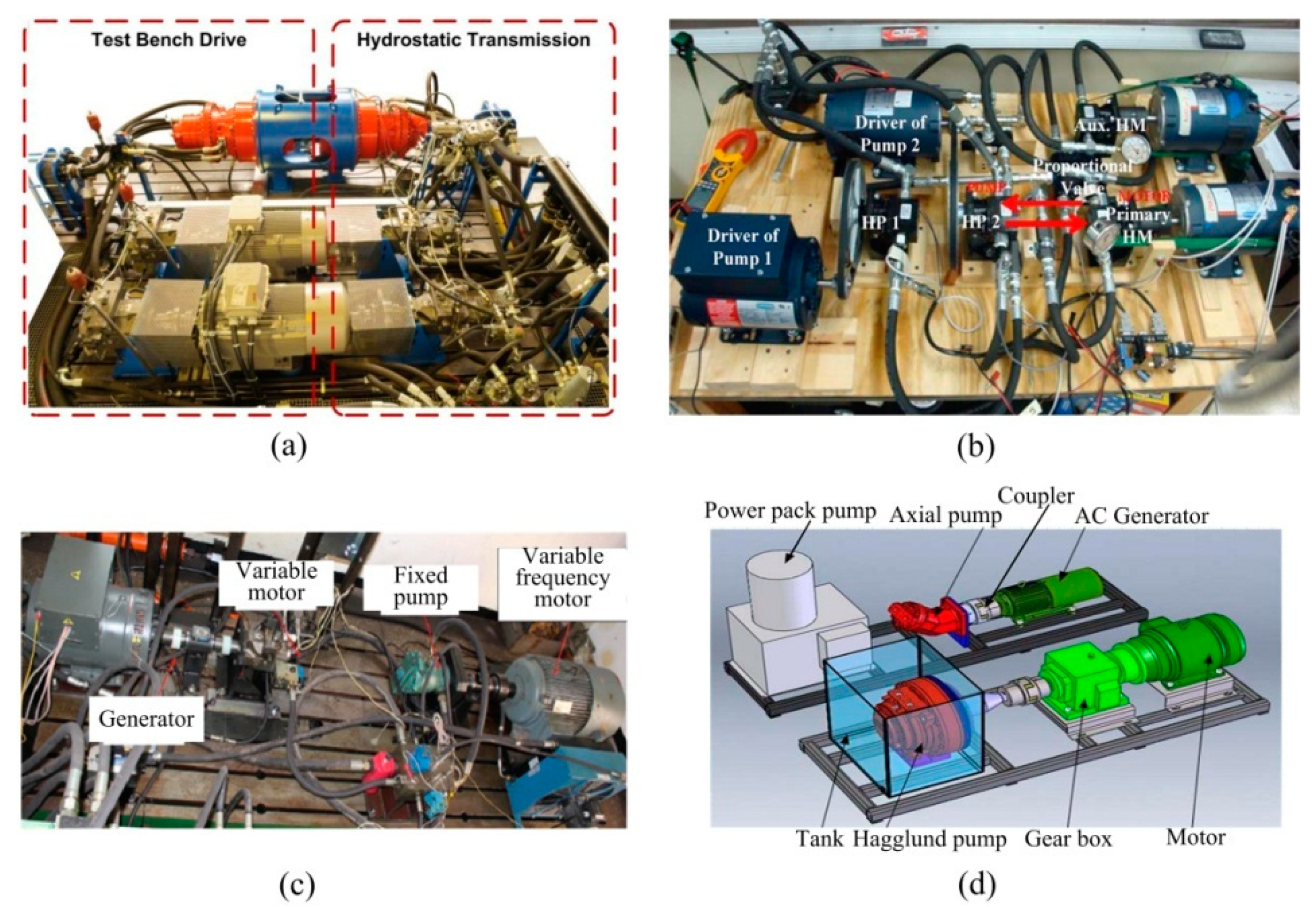
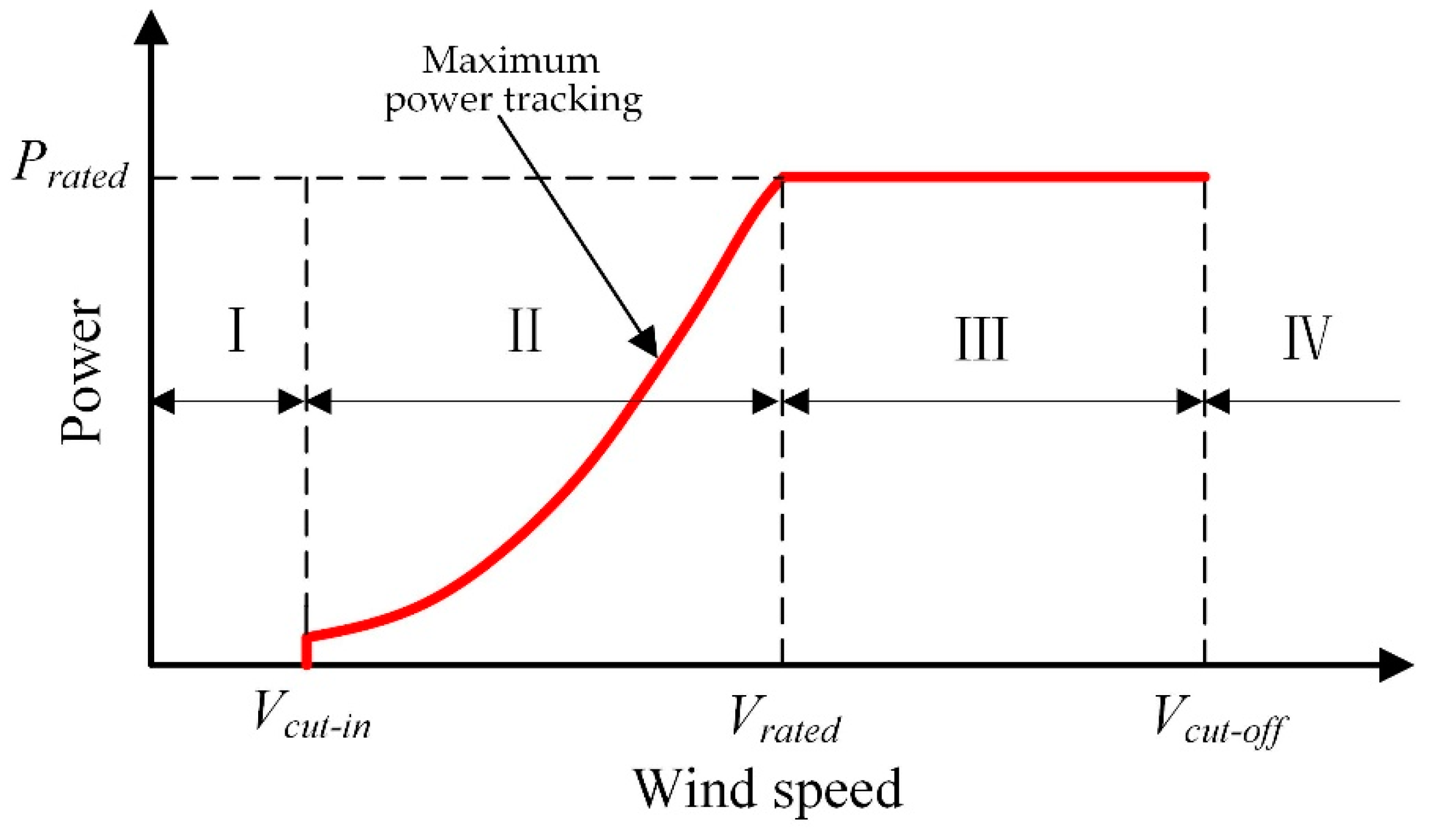
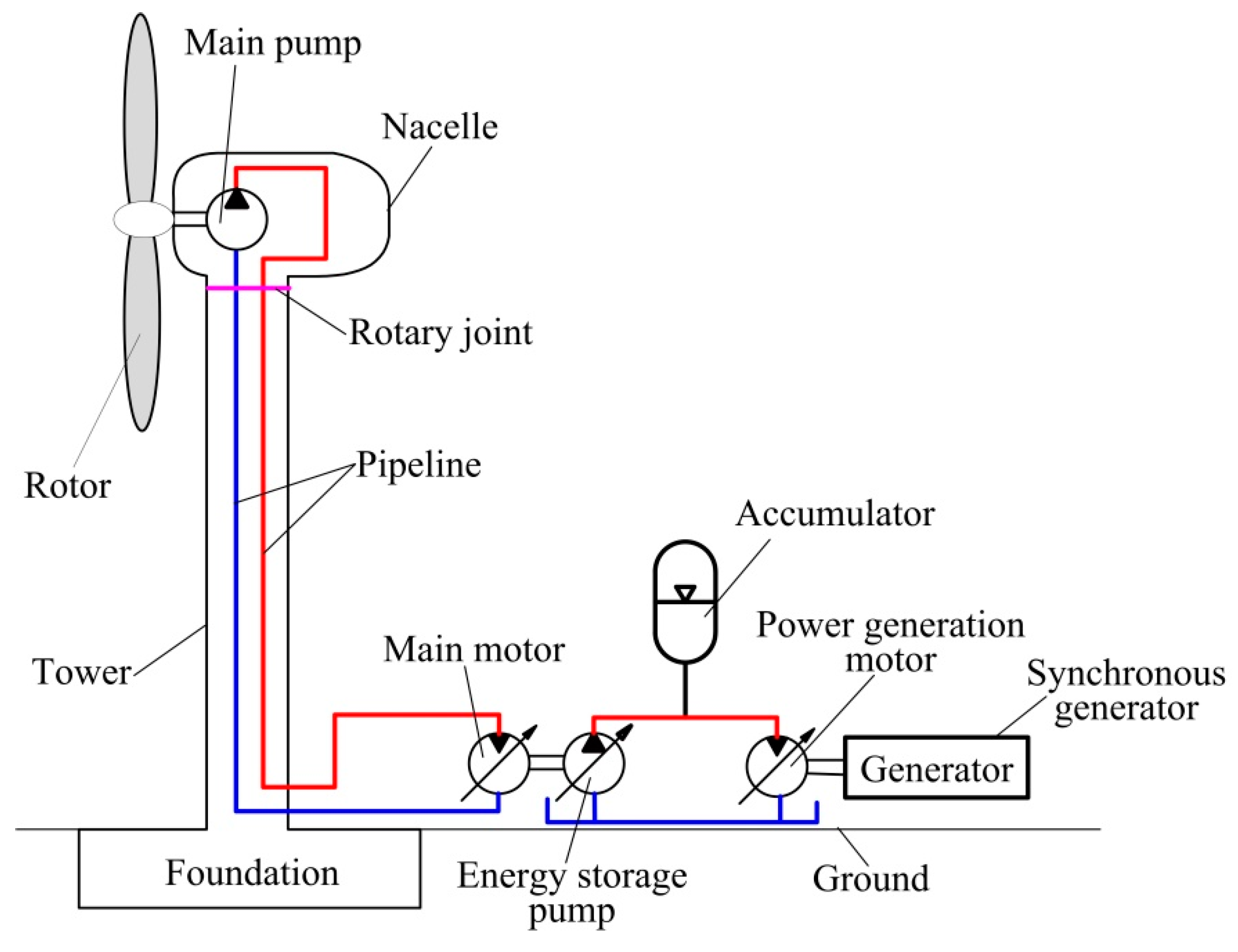

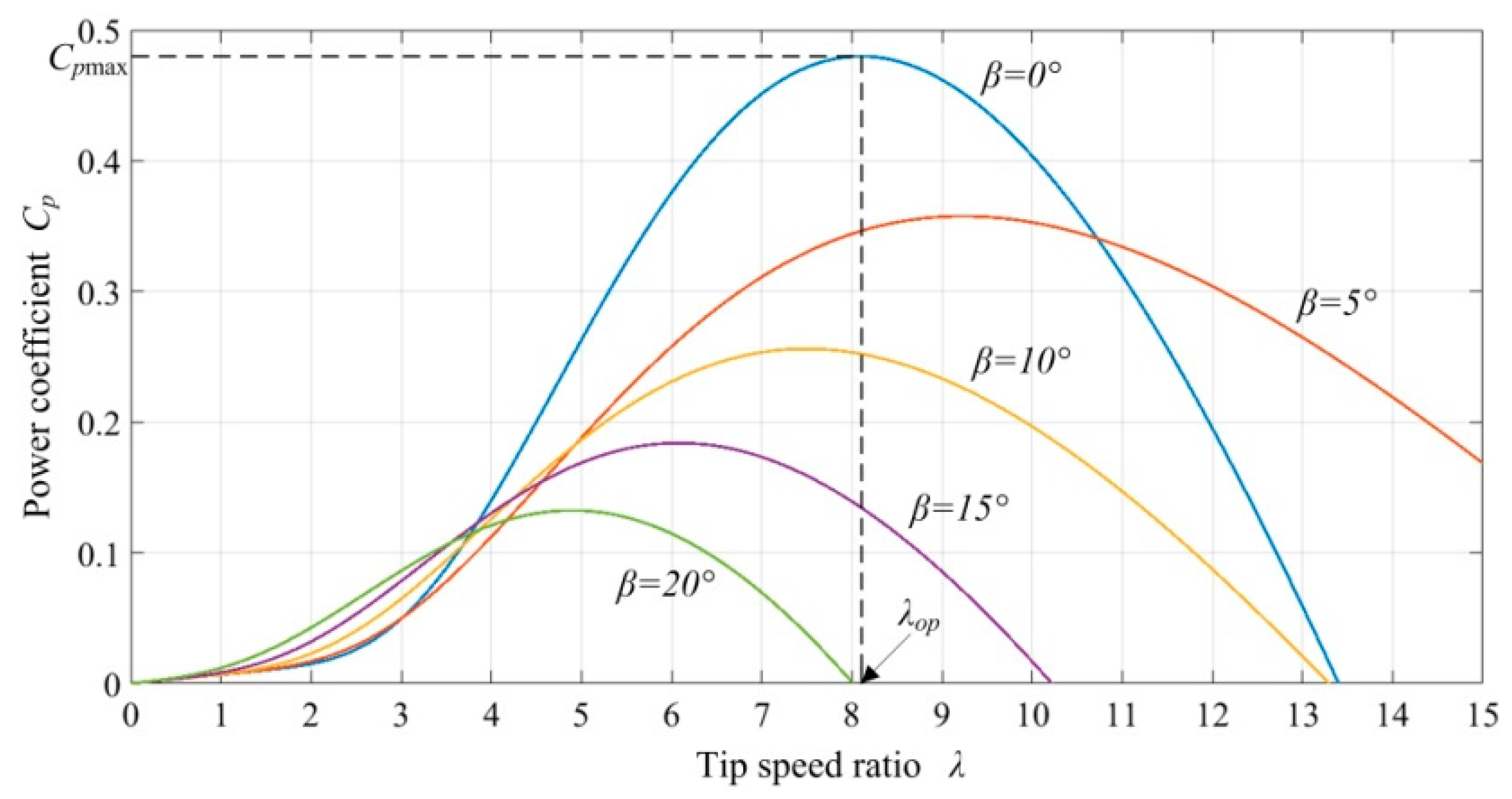
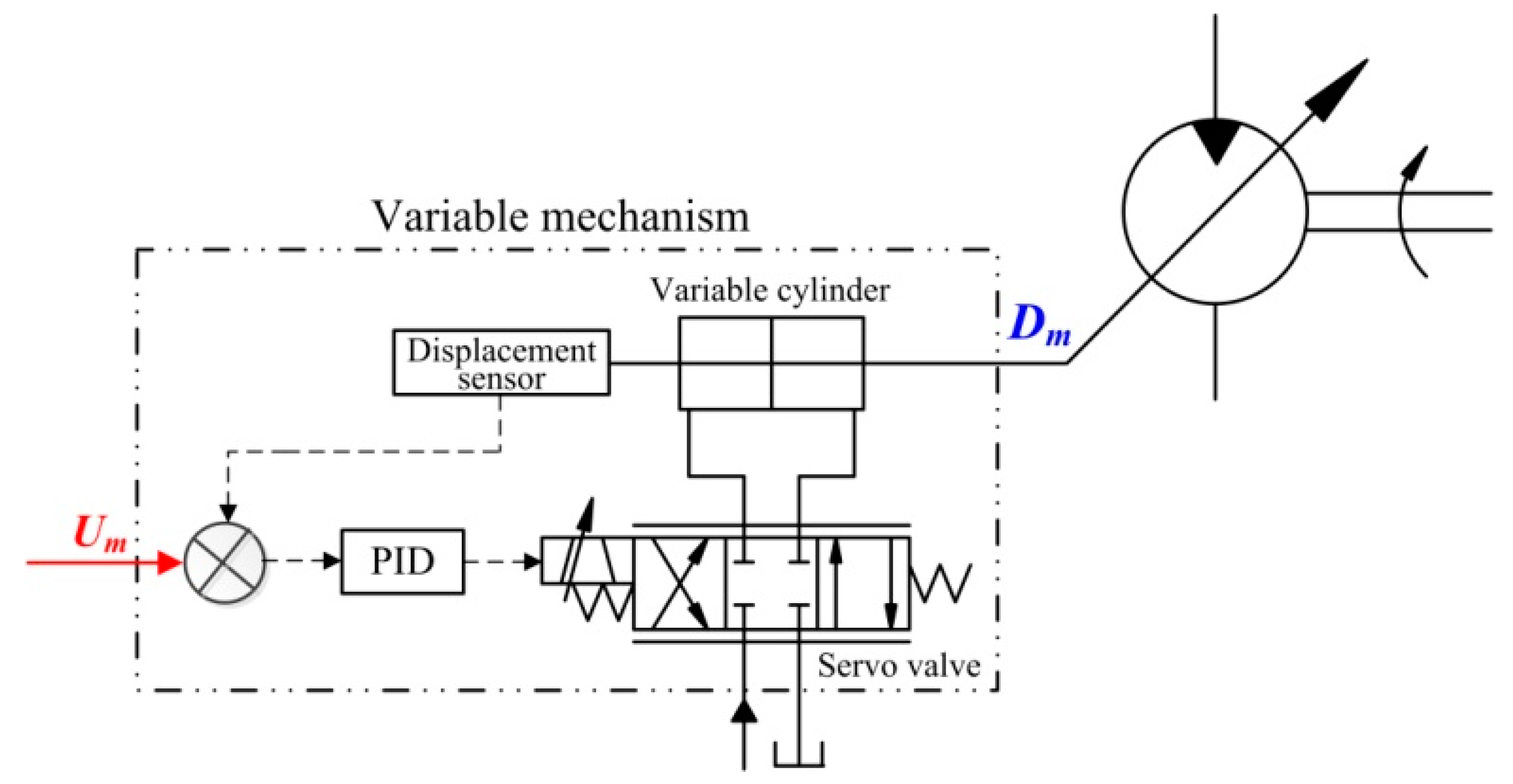
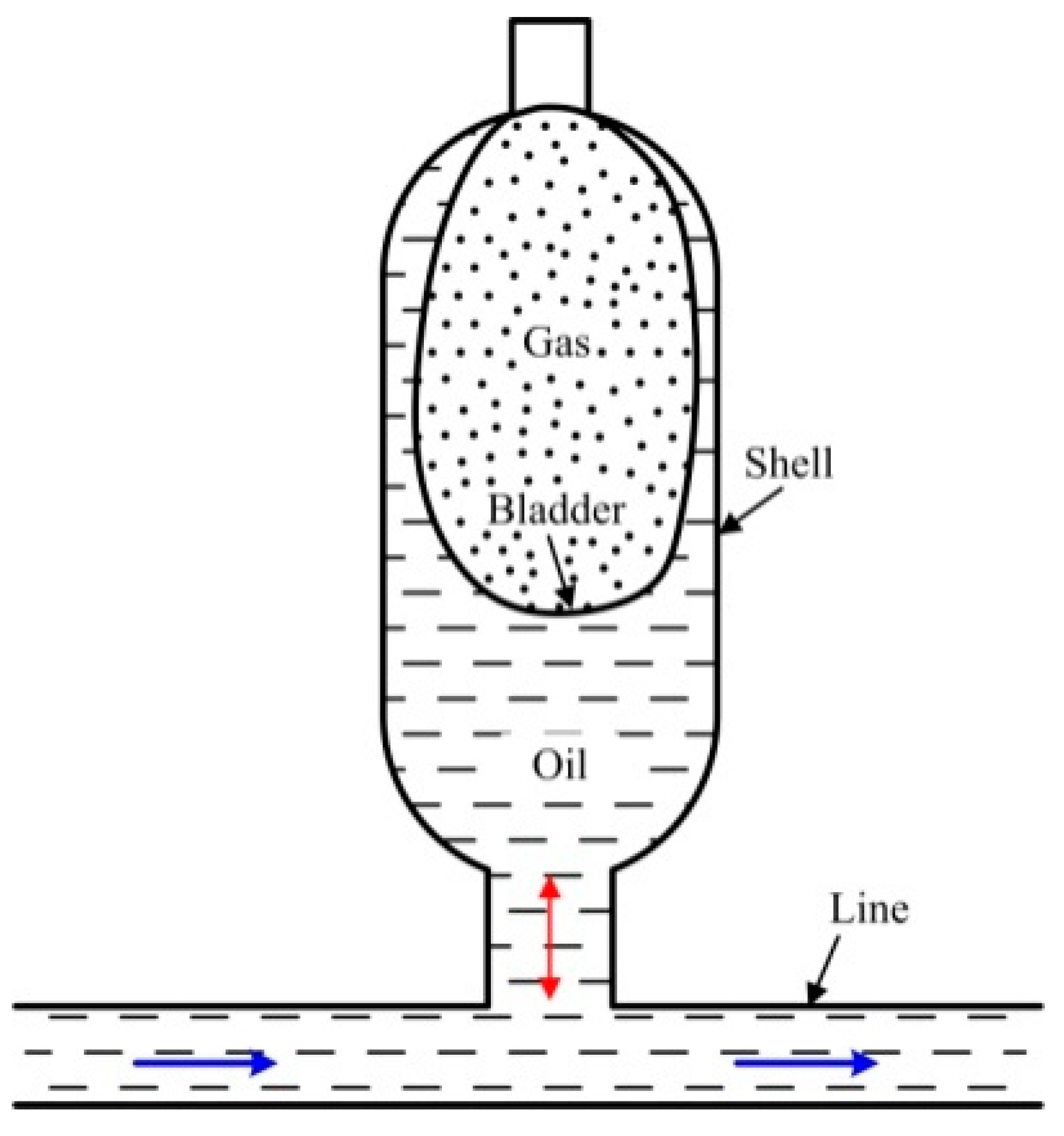
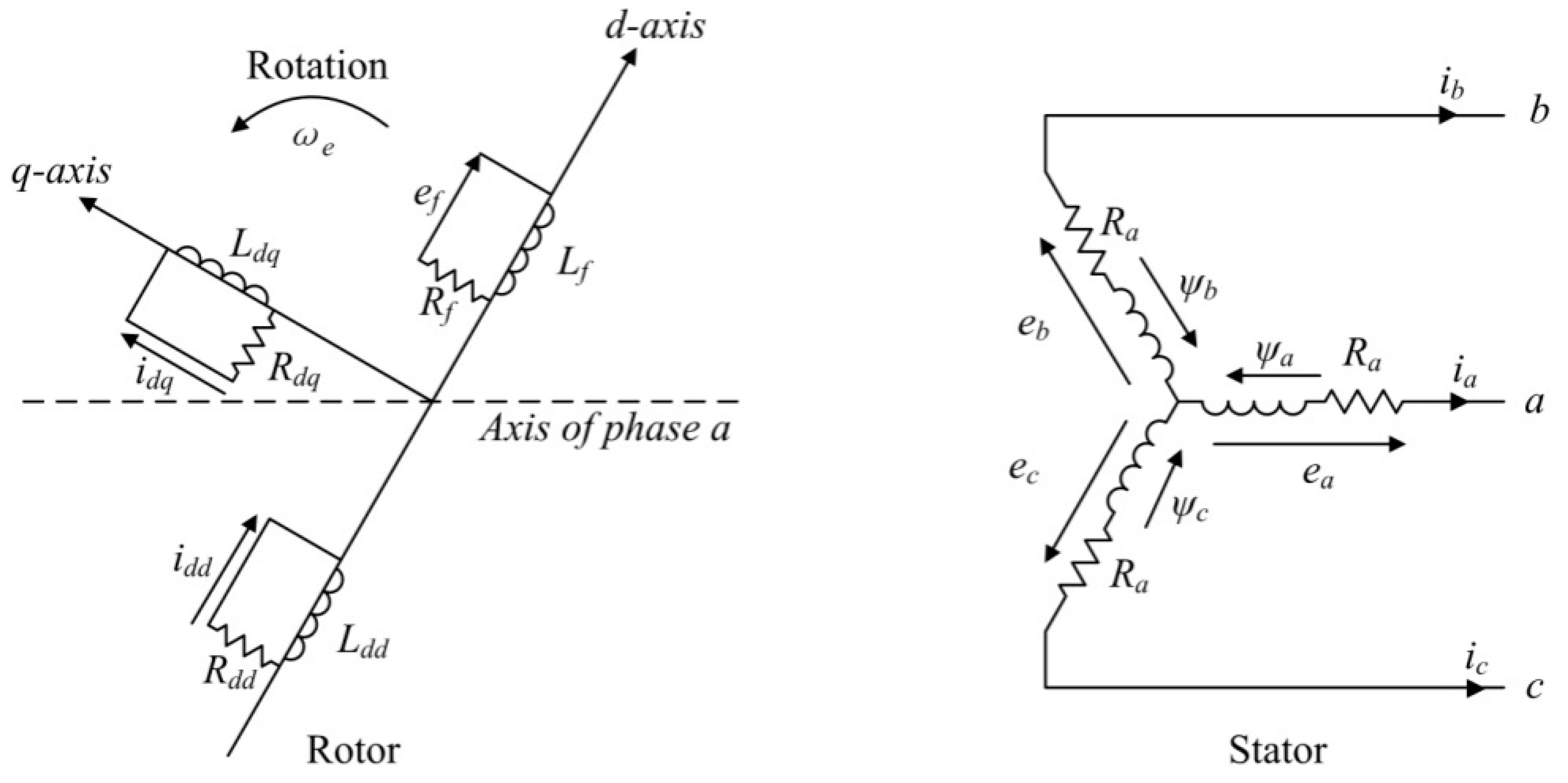
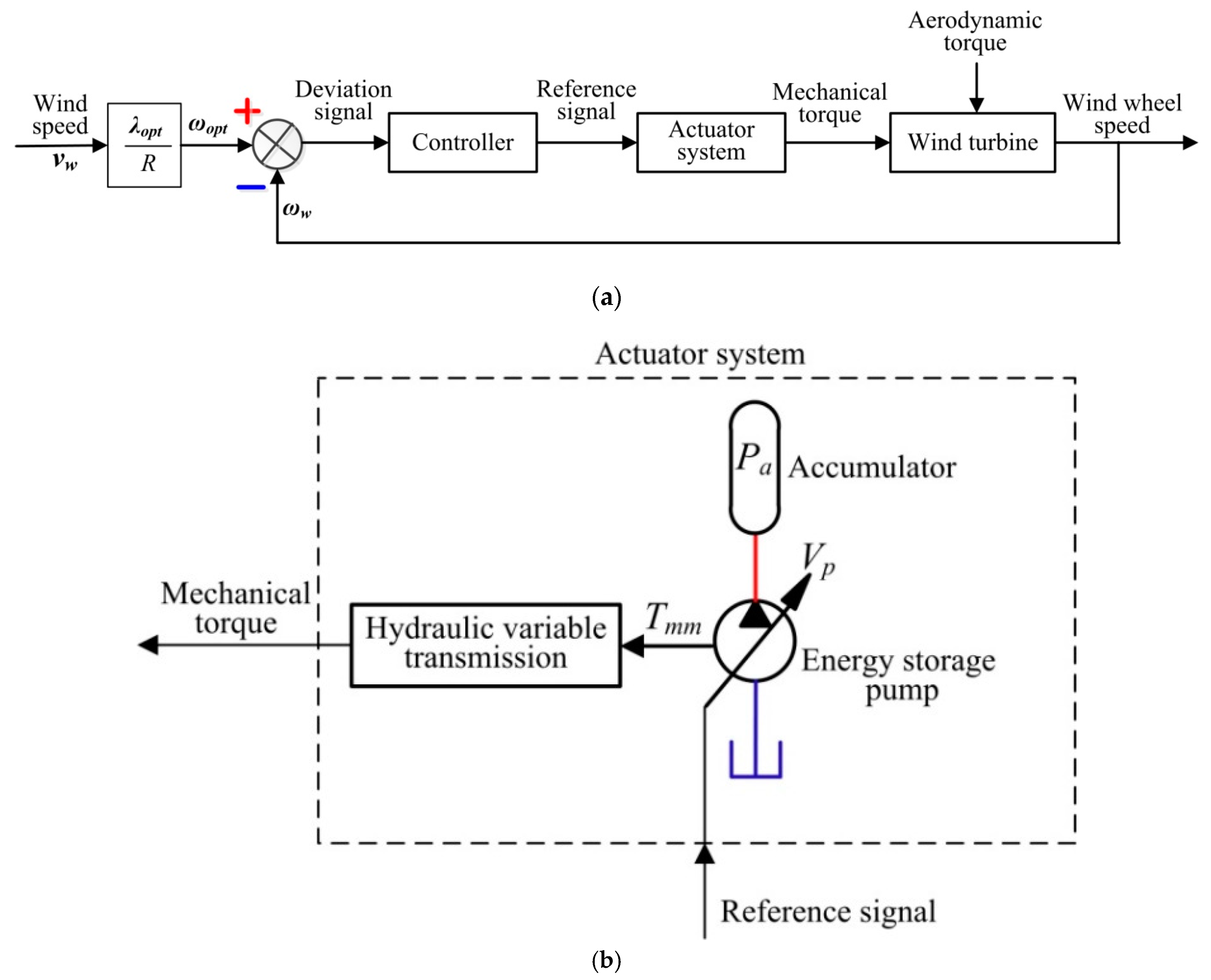
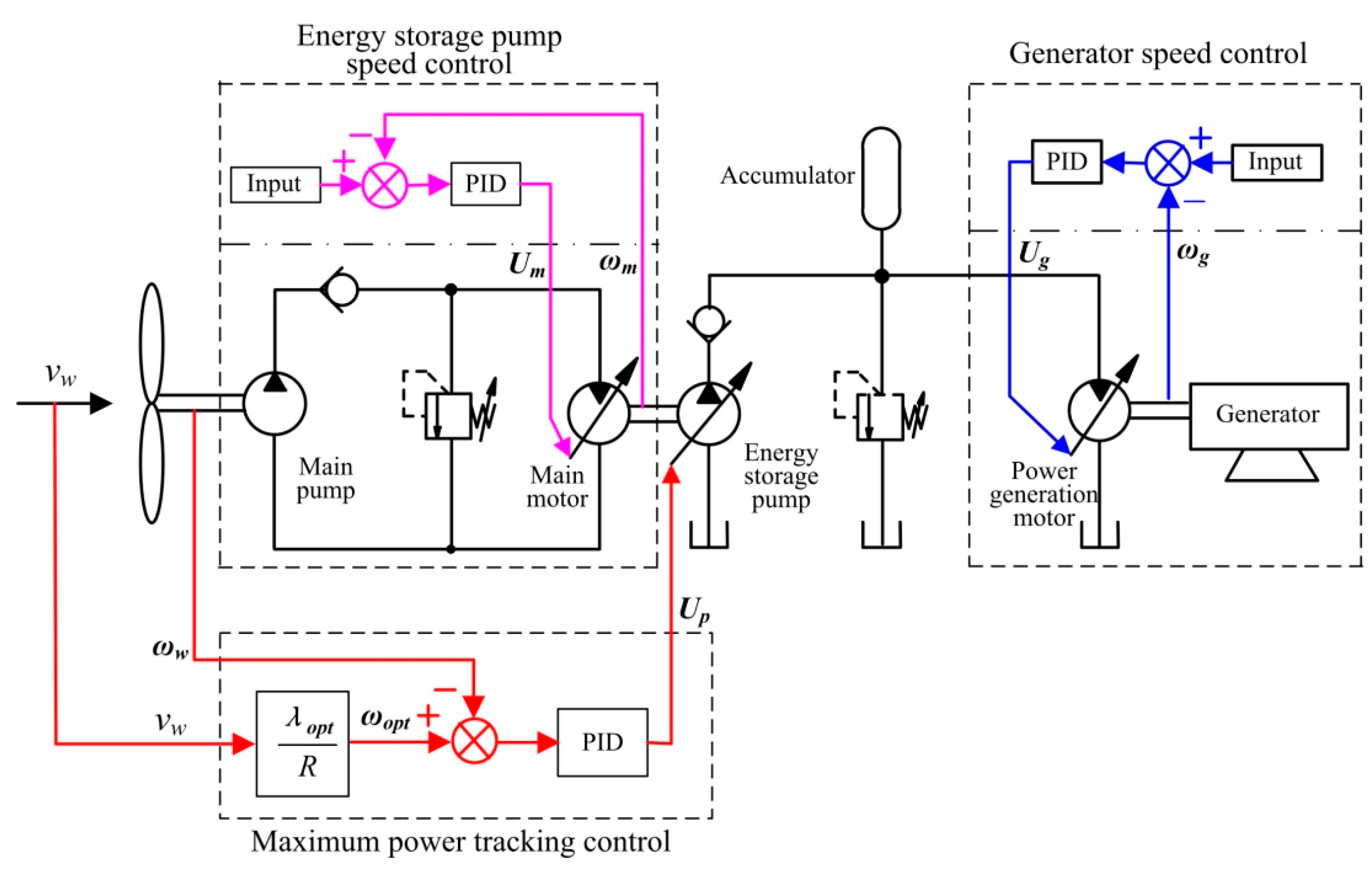
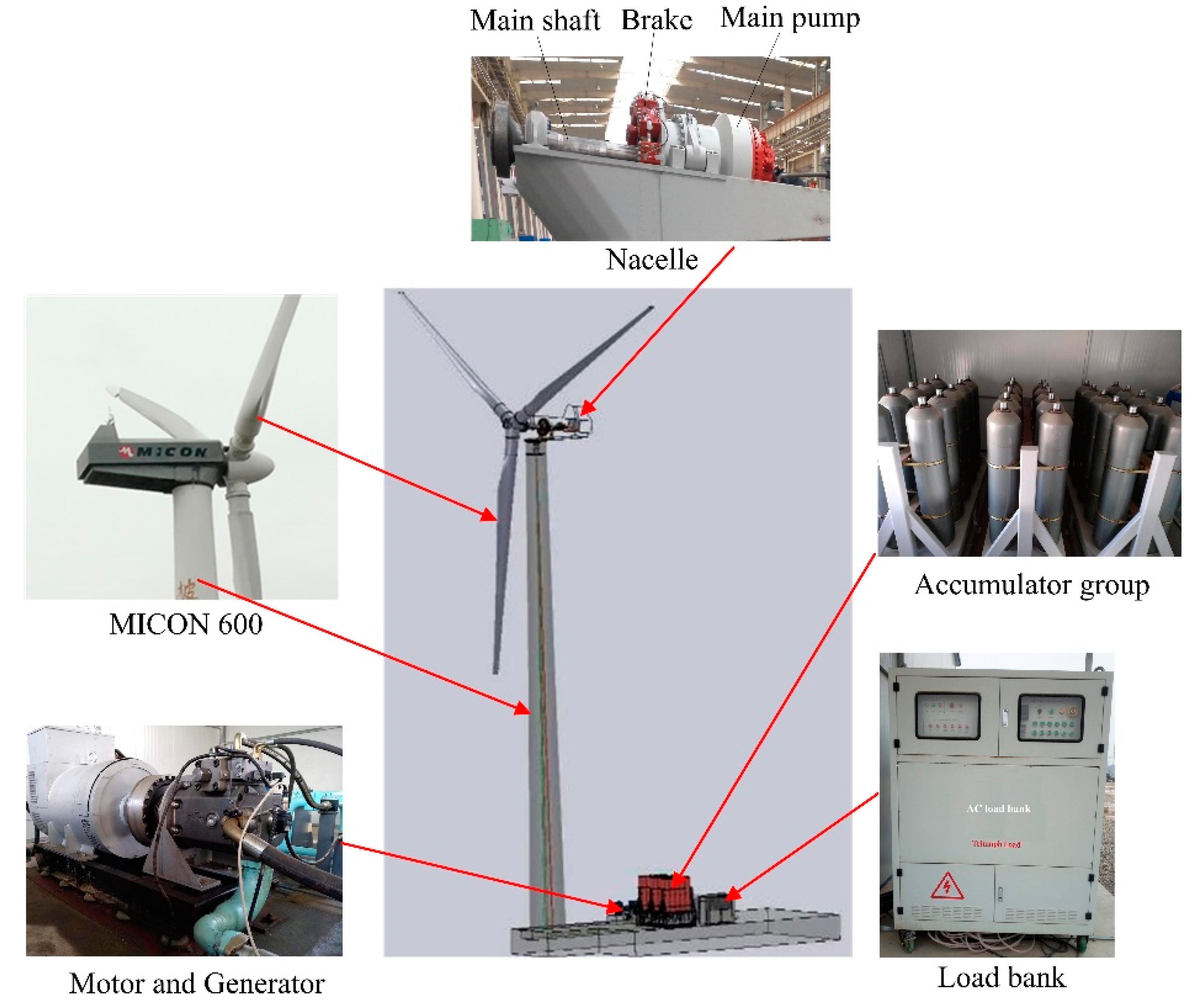
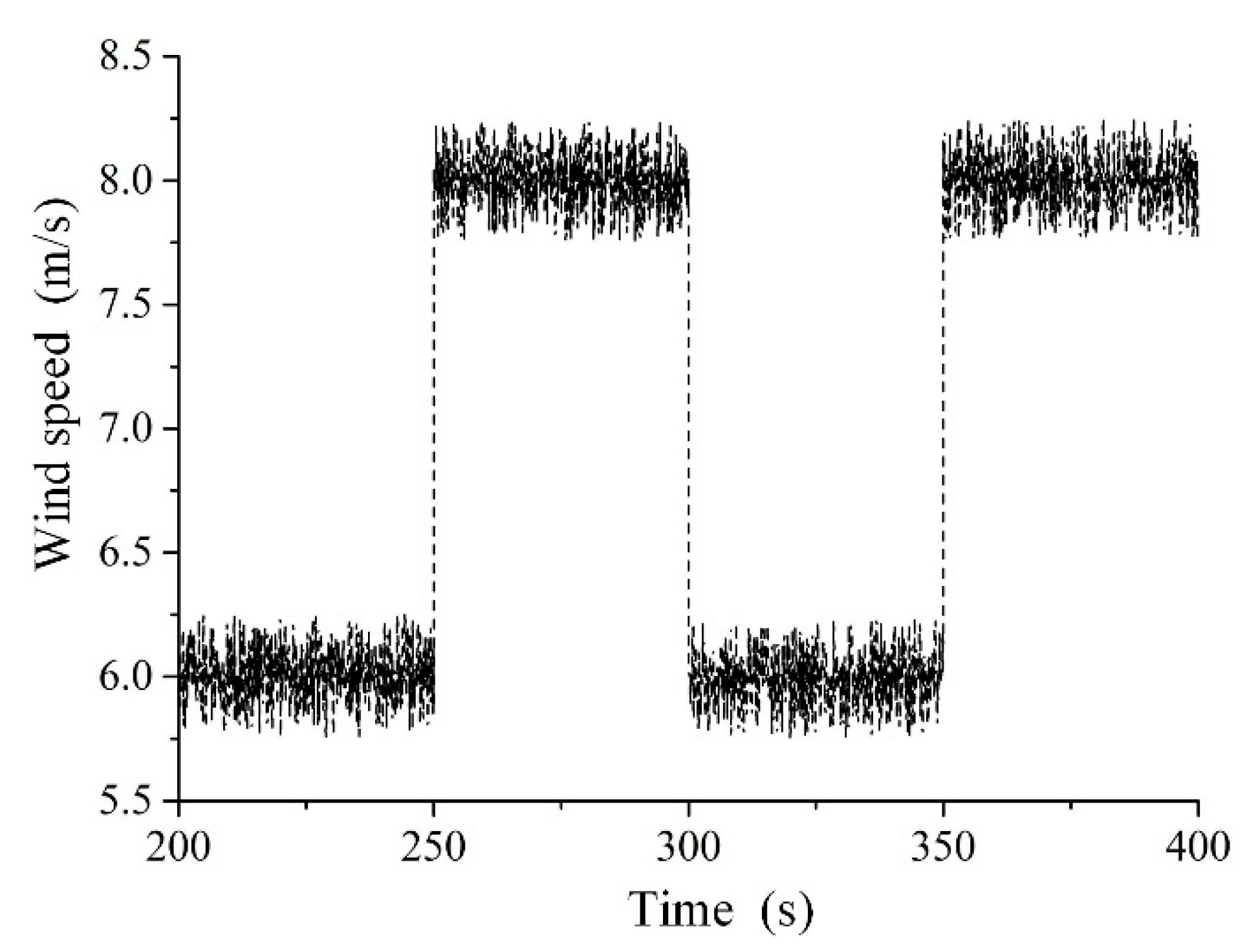
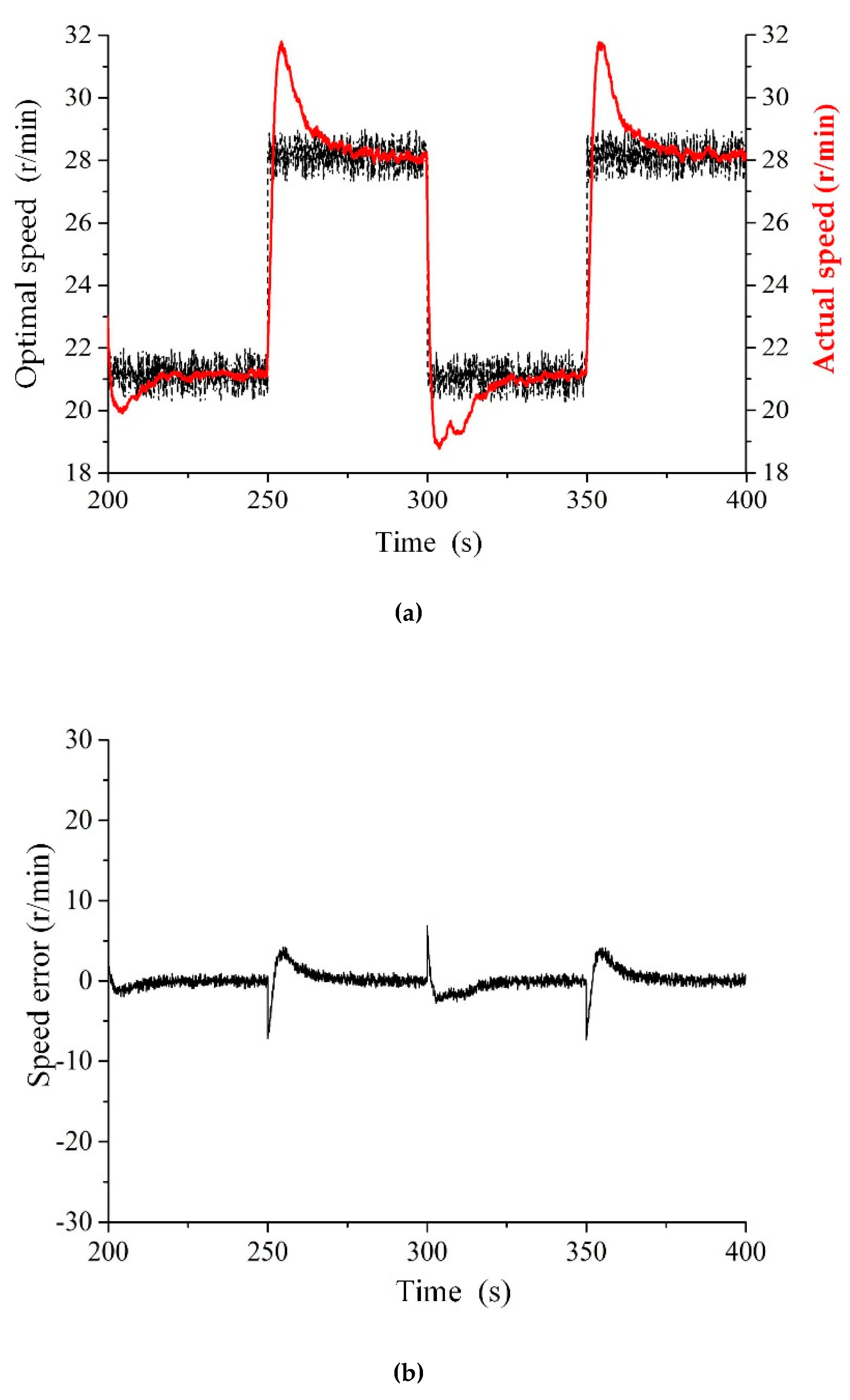
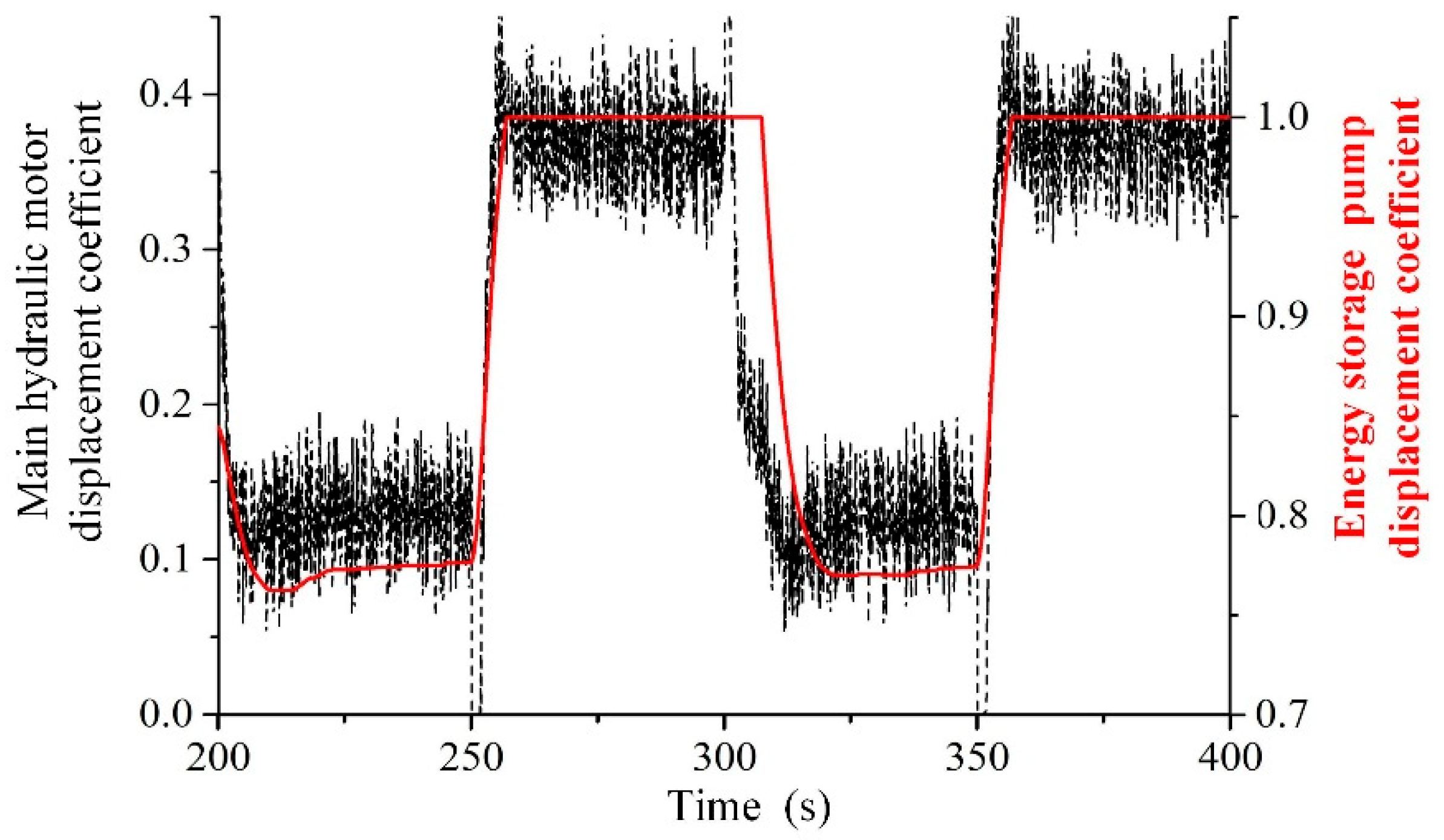
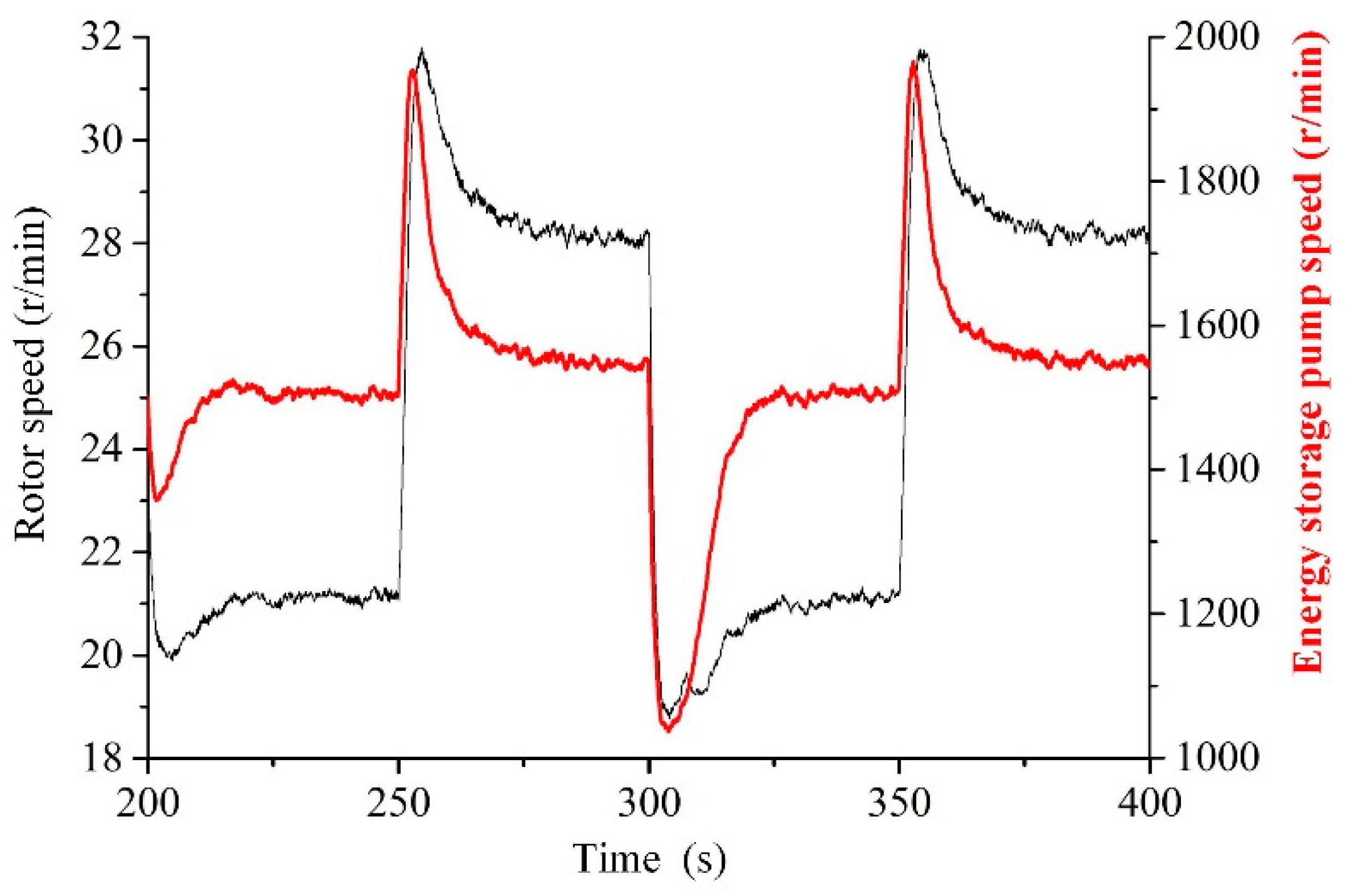
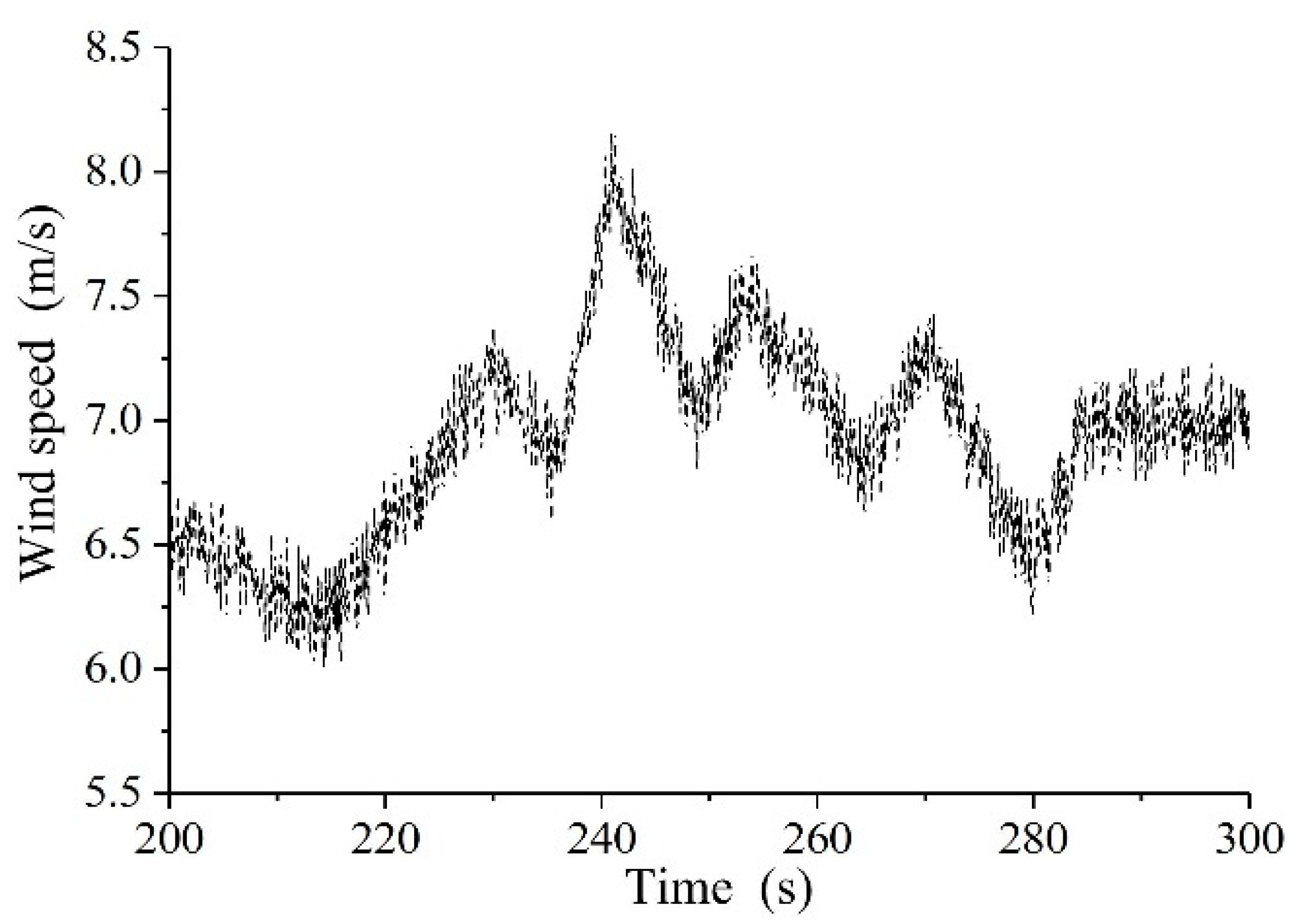


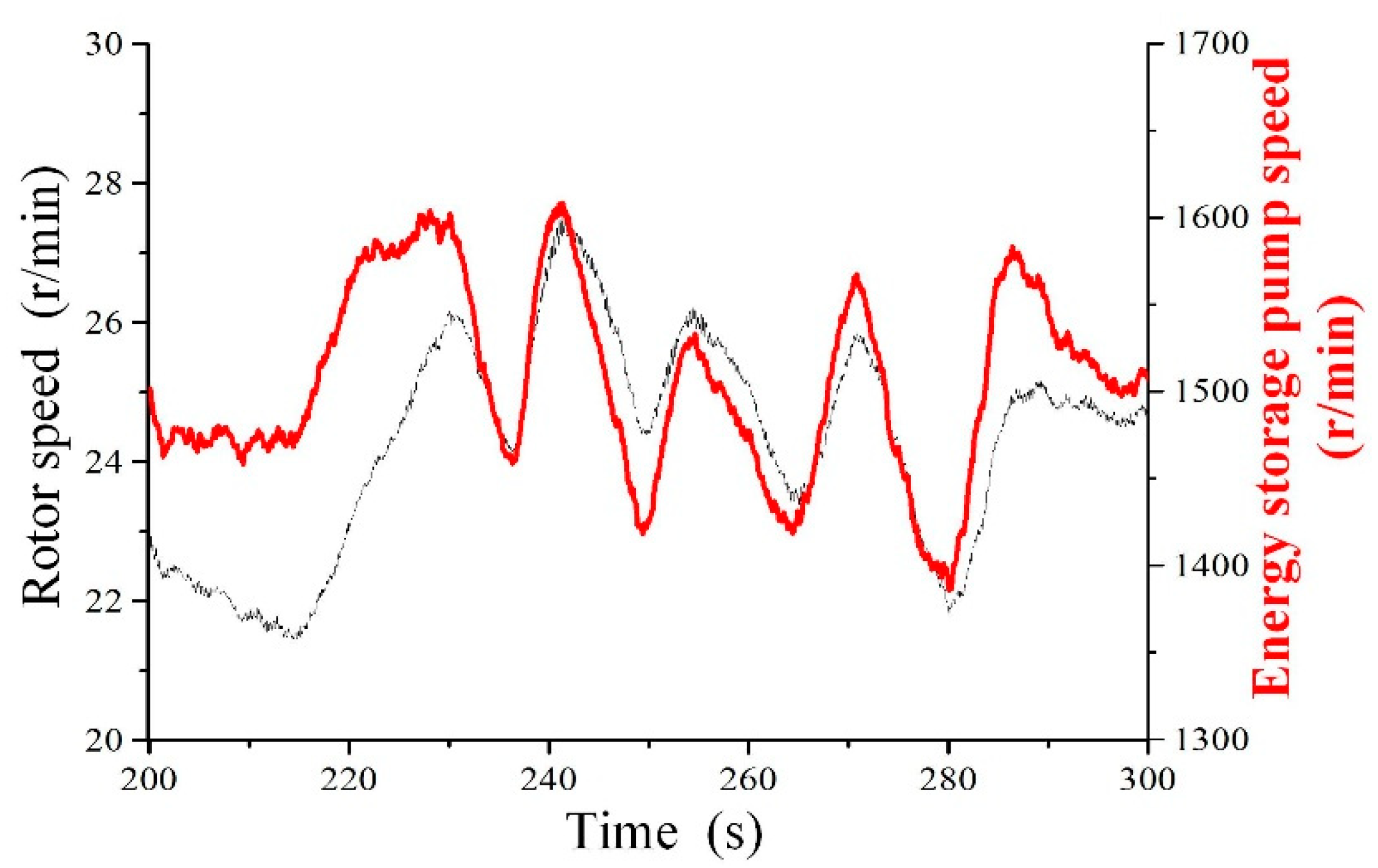
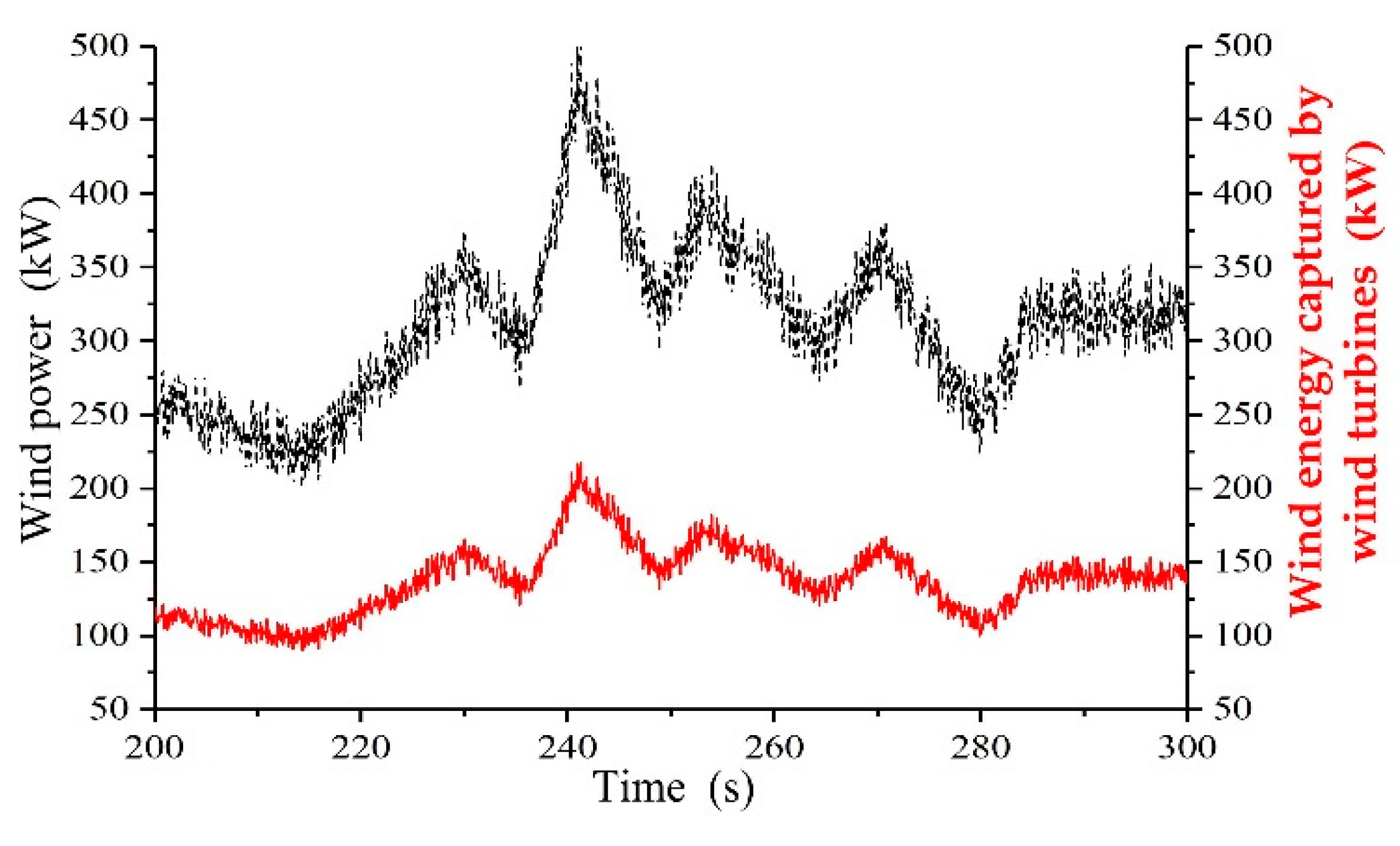

| Parameter | Value | Unit |
|---|---|---|
| Rotor diameter | 44 | m |
| Air density | 1.225 | kg/m3 |
| Rotor equivalent viscosity efficient | 50 | N∙m(r/min) |
| Rotor equivalent moment of inertia | 20,000 | kg∙m2 |
| Main hydraulic pump placement | 55,300 | mL/r |
| Main motor displacement | 1000 | mL/r |
| Main motor equivalent viscosity efficient | 0.1 | N∙m(r/min) |
| Main motor equivalent moment of inertia | 40 | kg∙m2 |
| Accumulator capacity | 6000 | L |
| Accumulator initial oil pressure | 180 | bar |
| Accumulator gas pre-charge pressure | 100 | bar |
| Energy storage pump displacement | 500 | mL/r |
| Generation motor speed command | 1500 | r/min |
© 2019 by the authors. Licensee MDPI, Basel, Switzerland. This article is an open access article distributed under the terms and conditions of the Creative Commons Attribution (CC BY) license (http://creativecommons.org/licenses/by/4.0/).
Share and Cite
Wei, L.; Zhan, P.; Liu, Z.; Tao, Y.; Yue, D. Modeling and Analysis of Maximum Power Tracking of a 600 kW Hydraulic Energy Storage Wind Turbine Test Rig. Processes 2019, 7, 706. https://doi.org/10.3390/pr7100706
Wei L, Zhan P, Liu Z, Tao Y, Yue D. Modeling and Analysis of Maximum Power Tracking of a 600 kW Hydraulic Energy Storage Wind Turbine Test Rig. Processes. 2019; 7(10):706. https://doi.org/10.3390/pr7100706
Chicago/Turabian StyleWei, Liejiang, Peng Zhan, Zengguang Liu, Yanhua Tao, and Daling Yue. 2019. "Modeling and Analysis of Maximum Power Tracking of a 600 kW Hydraulic Energy Storage Wind Turbine Test Rig" Processes 7, no. 10: 706. https://doi.org/10.3390/pr7100706
APA StyleWei, L., Zhan, P., Liu, Z., Tao, Y., & Yue, D. (2019). Modeling and Analysis of Maximum Power Tracking of a 600 kW Hydraulic Energy Storage Wind Turbine Test Rig. Processes, 7(10), 706. https://doi.org/10.3390/pr7100706




